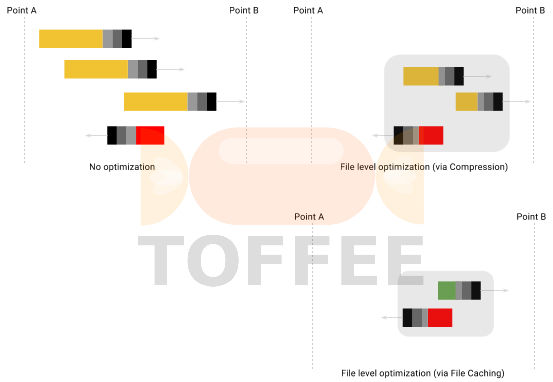DOCUMENTATION 》 TOFFEE (and TOFFEE-DataCenter) deployment in Large Infrastructure and or ISP Networks
Large Infrastructure or ISP setup: In case if you are an ISP and interested in deploying a large customer WAN Optimized network or an add-on
enhanced (WAN Optimized) network for select few customers, then you can deploy something as shown below. Although this case is not meant for hobby/DIY users.
This is a feasible solution for high-end professional application and the same can be deployed as shown below.

Learn more about: TOFFEE WAN Optimization deployment
Suggested Topics:
TOFFEE - WAN Optimization
Categories
| 💎 TOFFEE-MOCHA new bootable ISO: | Download |
| 💎 TOFFEE Data-Center Big picture and Overview: | Download PDF |

Saturday' 13-Mar-2021

Saturday' 13-Mar-2021
Featured Educational Video:

Saturday' 13-Mar-2021

Saturday' 13-Mar-2021
Research :: Optimization of network data (WAN Optimization) at various levels:

Learn Linux Systems Software and Kernel Programming:
![Linux, Kernel, Networking and Systems-Software online classes [CDN] Linux, Kernel, Networking and Systems-Software online classes [CDN]](http://sareesaremypassion.org/cdn/the-toffee-project/i/the_linux_channel_banner2.jpg)
Hardware Compression and Decompression Accelerator Cards:

TOFFEE-DataCenter on a Dell Server - Intel Xeon E5645 CPU:






